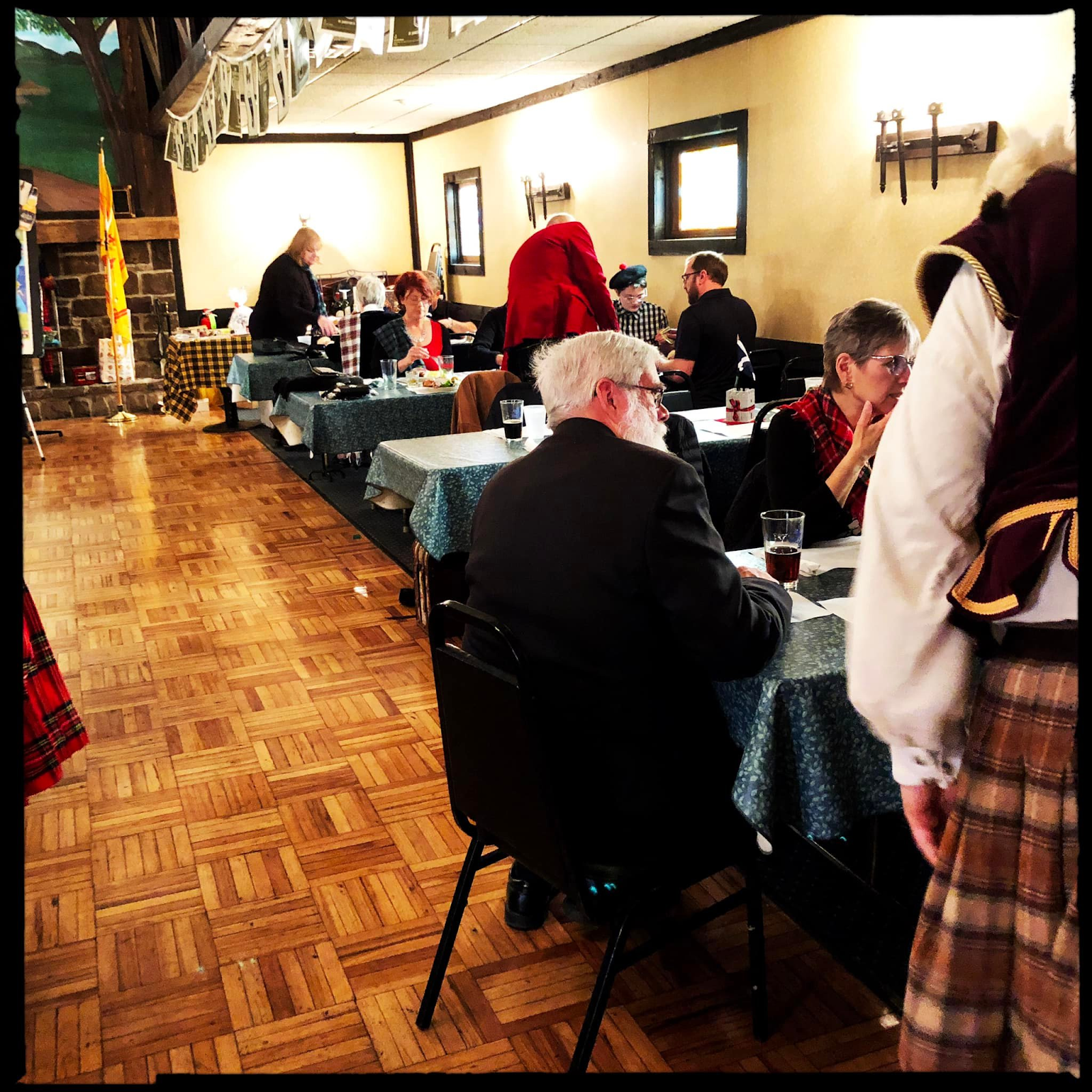Saturday, April 30, 2022
Drifting Along
Sunday, April 24, 2022
Saint Fidelis of Sigmaringen
Saint Fidelis of Sigmaringen
If a poor man needed some clothing, Fidelis would often give the man the clothes right off his back. Complete generosity to others characterized this saint’s life.
Born in 1577, Mark Rey became a lawyer who constantly upheld the causes of the poor and oppressed people. Nicknamed “the poor man’s lawyer,” Rey soon grew disgusted with the corruption and injustice he saw among his colleagues. He left his law career to become a priest, joining his brother George as a member of the Capuchin Order. Fidelis was his religious name. His wealth was divided between needy seminarians and the poor.
As a follower of Saint Francis of Assisi, Fidelis continued his devotion to the weak and needy. During a severe epidemic in a city where he was guardian of a friary, Fidelis cared for and cured many sick soldiers.
He was appointed head of a group of Capuchins sent to preach against the Calvinists and Zwinglians in Switzerland. Almost certain violence threatened. Those who observed the mission felt that success was more attributable to the prayer of Fidelis during the night than to his sermons and instructions.
He was accused of opposing the peasants’ national aspirations for independence from Austria. While he was preaching at Seewis, to which he had gone against the advice of his friends, a gun was fired at him, but he escaped unharmed. A Protestant offered to shelter Fidelis, but he declined, saying his life was in God’s hands. On the road back, he was set upon by a group of armed men and killed.
Fidelis was canonized in 1746. Fifteen years later he was recognized as a martyr.
Saturday, April 23, 2022
The Maltese Falcon
I've always enjoyed the Humphrey Bogart movie The Maltese Falcon. I recently came across a copy of the novel by Dashiell Hammett on which it was based and decided to give it a read.
Friday, April 22, 2022
Tuesday, April 19, 2022
Saint Bernadette Soubirous (cord bearer)
Saint Bernadette Soubirous
Bernadette Soubirous was born in 1844, the first child of an extremely poor miller in the town of Lourdes in southern France. The family was living in the basement of a dilapidated building when on February 11, 1858, the Blessed Virgin Mary appeared to Bernadette in a cave above the banks of the Gave River near Lourdes. Bernadette, 14 years old, was known as a virtuous girl though a dull student who had not even made her first Holy Communion. In poor health, she had suffered from asthma from an early age.
There were 18 appearances in all, the final one occurring on the feast of Our Lady of Mt. Carmel, July 16. Although Bernadette’s initial reports provoked skepticism, her daily visions of “the Lady” brought great crowds of the curious. The Lady, Bernadette explained, had instructed her to have a chapel built on the spot of the visions. There, the people were to come to wash in and drink of the water of the spring that had welled up from the very spot where Bernadette had been instructed to dig.
According to Bernadette, the Lady of her visions was a girl of 16 or 17 who wore a white robe with a blue sash. Yellow roses covered her feet, a large rosary was on her right arm. In the vision on March 25 she told Bernadette, “I am the Immaculate Conception.” It was only when the words were explained to her that Bernadette came to realize who the Lady was.
Few visions have ever undergone the scrutiny that these appearances of the Immaculate Virgin were subject to. Lourdes became one of the most popular Marian shrines in the world, attracting millions of visitors. Miracles were reported at the shrine and in the waters of the spring. After thorough investigation, Church authorities confirmed the authenticity of the apparitions in 1862.
During her life, Bernadette suffered much. She was hounded by the public as well as by civic officials until at last she was protected in a convent of nuns. Five years later, she petitioned to enter the Sisters of Notre Dame of Nevers. After a period of illness she was able to make the journey from Lourdes and enter the novitiate. But within four months of her arrival she was given the last rites of the Church and allowed to profess her vows. She recovered enough to become infirmarian and then sacristan, but chronic health problems persisted. She died on April 16, 1879, at the age of 35. Bernadette Soubirous was canonized in 1933.
Pax et bonum
Monday, April 18, 2022
Blessed Jame Oldo
You’ve heard rags-to-riches stories. Today, we celebrate the reverse.
James of Oldo was born into a well-to-do family near Milan in 1364. He married a woman who like him, appreciated the comforts that came with wealth. But an outbreak of the plague drove James, his wife, and their three children out of their home and into the countryside. Despite those precautions, two of his daughters died from the plague. James determined to use whatever time he had left to build up treasures in heaven and to build God’s realm on earth.
He and his wife became Secular Franciscans. James gave up his old lifestyle and did penance for his sins. He cared for a sick priest, who taught him Latin. Upon the death of his wife, James himself became a priest. His house was transformed into a chapel where small groups of people, many of them fellow Secular Franciscans, came for prayer and support. James focused on caring for the sick and for prisoners of war. He died in 1404 after contracting a disease from one of his patients. James Oldo was beatified in 1933.
- From Franciscan Media
Saturday, April 16, 2022
Brother Momus
Friday, April 15, 2022
Good Friday Stations of the Cross in Reparation for Abortion (2022)
Monday, April 11, 2022
Tartan Night!
Saturday, April 9, 2022
Not so antisocial
Wednesday, April 6, 2022
Disney has a history of corrupting
Tuesday, April 5, 2022
In Praise of Worcestershire Sauce
One of the persons involved in the discussion spoke disdainfully of Worcestershire sauce. He said it was one of those things that people sometimes bought because they were supposed to have some on hand, but ended up throwing it out unused years later after the expiration date ran out.
I was appalled.
And not just at the waste.
I am a fan of Worcestershire sauce. I go through a couple of bottles a year.
I add it to so many things - like spaghetti sauce, scrambled eggs, and stir fries. Sometimes I put it on pasta instead of spaghetti sauce. I sprinkle it on such things as popcorn and French fries.
It is not the only sauce I use to spice up my food. Our refrigerator is stocked with tabasco sauce, Frank’s Redhot, various hot pepper and sriracha sauces, mustard with horseradish, and Chinese mustard. I go through several bottles of these each year as well, adding these spicy condiments to many of the same foods that I enhance with Worcestershire sauce..
I’ve always liked hot and spicy foods. In college, I even used to compete in hot pepper eating contests. Rather than driving fast or doing daredevil and dangerous and possibly life-threatening sports like too many other young men, I opted for palate challenges.
What do you expect from an English major and teacher who likes to read and write obscure kinds of poetry?
I tell people I like my food to fight back. I tell them that putting hot, spicy foods into my gullet has helped me fend off colds, the flu, and many other ills.
But back to Worcestershire sauce.
There’s a kind of mystery about the origins of Worcestershire sauce. The fermented sauce was supposedly created in the early 1800’s by two pharmacists in Worcester England, John Wheeley Lea and William Henry Perrins. They formed the Lea & Perrins company to sell the sauce.
The company originally claimed that the sauce came "from the recipe of a nobleman in the county." Who that was was not initially stated. The company apparently later claimed that "Lord Marcus Sandys, ex-Governor of Bengal" encountered the sauce in India in the 1830s, and commissioned the local Lea and Perrins to recreate it. But Lord Marcus “Lord Sandys” ever visited India prior to the creation of the sauce..
Maybe Lea and Perrins were trying to make their sauce seem more exotic. Another story of the origins of the sauce, and one that seems more plausible, is simply that they were experimenting with vinegar-based seasoning sauces and came up with a batch that was too strong. They put it in a basement and forgot about it for two years. There, it fermented and developed its distinct flavor.
A flavor I like.
Whatever the truth about its origins, Worcestershire sauce is a staple in our household.
As that gastronomic expert Geoffrey Chaucer once remarked, "Woe to the cook whose sauce has no sting."
Monday, April 4, 2022
Secular Franciscan Artists
In his wonderful series Catholicism, Bishop Robert Barron used great works of art and architecture to help explore and explain our faith.
Franciscans have a long history in the arts. St. Francis himself was a “troubadour,” and his poetry is among the first written in vernacular Italian. His followers followed his lead in the art – including a number of Secular Franciscans. We have writers such as Dante and St. Thomas More. We have musicians such as Charles Gounod, Franz Liszt, and John Michael Talbot.
In terms of painting and sculpture, Secular Franciscans can claim some familiar names.
The most famous of these is Michelangelo Buonarroti. The Pieta is above, and here is his The Crucifixion of St. Peter.
A third familiar name is Giotto (Giotto di Bondone), who gave us such works as St. Francis Preaching to the Birds.










.jpg)





















